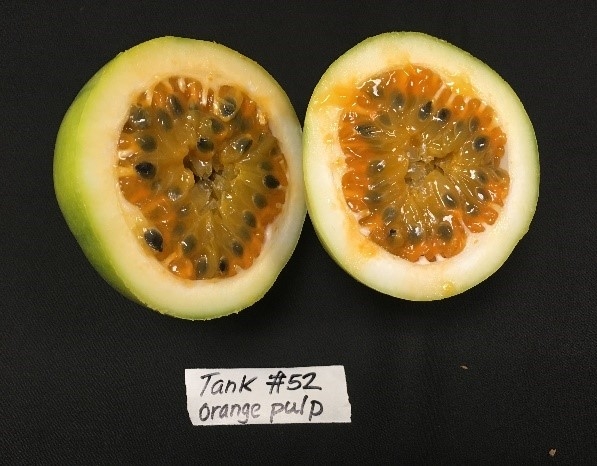- Author: Ben Faber
There are 4,000 species of earthworms grouped into five families and distributed all over the world. Some grow uo to 3 feet long, while others are only a few tenths of inches. We call them nightcrawlers, field worms, manure worms, red worms and some people call them little diggers.
In California, we have some native species of earthworms, but in many cases non-native introduced species have come to dominate. The predominant native species belong to the Argilophilus and Diplocardia while many of the non-native are of European in origin in the Lumbricidae family. Many of these non-natives were probably introduced by settlers bringing plants from home, which had soil containing the worms. A survey of California earthworms by the US Forest Service can be found at:
https://www.fs.fed.us/psw/publications/documents/psw_gtr142/psw_gtr142.pdf
This is a wonderful description of earthworm biology and their occurrence in the landscape.
When digging in citrus orchards, it is common to find earthworms in the wetted mulch under tree canopies. Many of our citrus orchards were initially established by “balled and burlap” nursery trees that brought worms along with the soil. In the case of many avocado orchards, on the other hand, it can be rare to find earthworms in orchards. Most avocado orchards have been established since the 1970s when potting mixes and plastic liners were the standard practice and worms were not part of the planting media. Even though there is a thick leaf mulch in avocado orchards, the worms have not been introduced, and it is rare to find them.
Numerous investigators have pointed out the beneficial effects of earthworms on soil properties. One of the first of these observers was Charles Darwin who published Earthworms and Vegetable Mould in 1881. He remarked on the great quantity of soil the worms can move in a year. He estimated that the earthworms in some of his pastures could form a new layer of soil 7 inches thick in thirty years, or that they brought up about 20 tons of soil per acre, enough to form a layer 0.2-inch-deep each year.
Earthworms, where they flourish, are important agents in mixing the dead surface litter with the main body of the soil. They drag the leaves and other litter down into their burrows where soil microorganisms also begin digesting the material. Some earthworms can burrow as deeply as 5 to 6 feet, but most concentrate in the top 6 to 8 inches of soil.
The worm subsists on organic matter such as leaves and dead roots near the soil surface. The earthworm ingests soil particles along with the organic matter and grinds up the organic matter in a gizzard just as a chicken does. This is excreted in what we call worm casts. The castings differ chemically from the rest of the soil, as they are richer in nitrogen, potassium and other mineral constituents.
Castings are a natural by-product of worms. When added to normal soils in gardens or lawns, they provide the same kinds of benefits as other bulky organic fertilizers. Castings today are not commonly used as fertilizer by commercial plant growers because of their cost relative to other fertilizers. However, castings are used by some organic growers and are sold commercially as a soil amendment or planting medium for ornamental plants grown in pots.
The physical soil churning process also has several important effects:
-Organic residues are more rapidly degraded with the release of elements such as nitrogen, sulfur and other nutrients.
-Some of the inorganic soil minerals tend to be solubilized by the digestive process.
-Extensive burrowing improves soil aeration.
-Burrowing can improve water penetration into soils
-The earthworm carries surface nutrients from the soil surface and imports them into the root zone of the plant.
Although earthworms are considered beneficial to soil productivity, few valid studies have been made to determine whether their presence will significantly improve plant growth. This may seem odd since many of us have learned from childhood that worms are good. It is something like the chicken and the egg analogy. The conditions that are conducive to earthworms are also ideal for plants. Both plants and worms need temperatures between 60 and 100 degrees F for good growth; both need water, but not too much or little; they both require oxygen for respiration; and they do not like soils that are too acid or basic or too salty. By correcting soil conditions that are unfavorable for one will also improve the outlook for the other. The earthworm is a natural component of the soil population. If the soil is properly managed this natural population will thrive. In this sense, the presence or absence or earthworms can be an indicator of the "fertility" of one's soil.
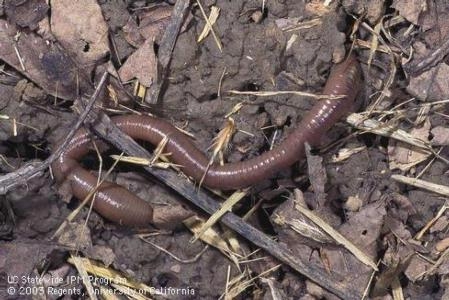
- Author: Sonia Rios
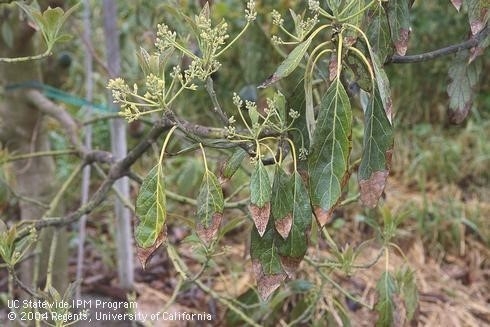
When: December 15, 2016
Where: USDA-ARS U.S. Salinity Laboratory - Loctated on UCR Campus 450 W. Big Springs Road, Riverside, CA 92507 https://campusmap.ucr.edu/
Time: Registration, light breakfast & coffee will be served at 8:00 AM, program from 8:30 – Noon
Cost: FREE Please register at : http://ucanr.edu/survey/survey.cfm?surveynumber=19550
Moderator: Sonia Rios, Subtropical Horticulture Farm Advisor, UCCE Riverside & San Diego Co.
Agenda:
8:30 AM – Welcome, Donald Suarez, U.S. Salinity Laboratory, Director
8:35 AM – “Management of avocado production in southern California” - Peggy Mauk Ph.D., Dir. of Agricultural 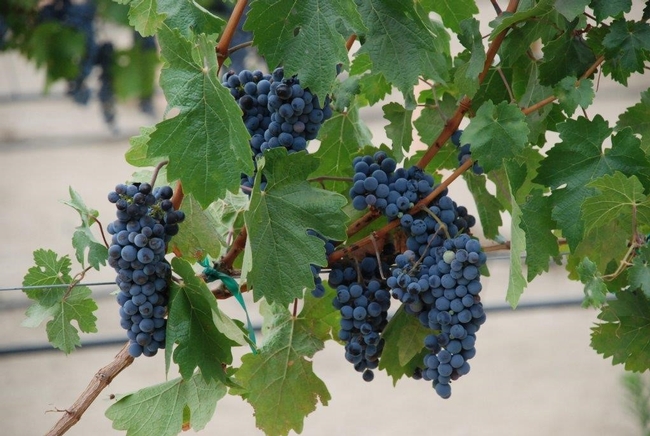
9:05 AM – “Avocado salinity management: Response of different rootstocks”- Donald Suarez Ph.D., USDA-ARS Salinity Laboratory Director
9:25 AM - “Grape Management in southern California - Carmen Gispert Ph. D. Area Viticulture Advisor, UCCE Riverside
9:55 AM – “Wine Grape production under saline conditions” - Donald Suarez Ph.D. USDA-ARS Salinity Laboratory Director.
10:10 AM - Break- light refreshments & snacks
10:30 – Noon - “Introducing Passion Fruit as a New Crop to Southern California- Cultural aspects and salinity effects” & Field Tour - Jorge Ferreira, Ph.D., Research Plant Physiologist, USDA-ARS, US Salinity Lab.
For more information, please Contact: Sonia Rios, UCCE Subtropical Farm Advisor: sirios@ucanr.edu
OR
Donald Suarez, USDA Salinity Laboratory Director: donald.suarez@ars.usda.gov, 951-369-4815
- Author: Ben Faber
Thanks for the rains that leach the soils of accumulated salts and bring on new fresh growth. Or maybe not. When we apply irrigation water with salts which with few exceptions we do in irrigated agriculture, salts accumulate in the soil. They accumulate in a certain pattern depending on the type of irrigation and soil type. There's a strong tendency for drip and microsprinklers to form a pattern of salt accumulation near the margins of the wetted patterns. This pattern is stronger with drip because the source point is always pushing a front outward from the emission point. This pattern occurs with microsprinklers, as well, although not as strongly. These patterns continue to form and accumulate as long as there is no rainfall to evenly push the salt down below the root zone. The longer the period of no rain, the larger the salt concentration at the margin.
So the way water moves is generally down. It moves in a wetting front drawn by gravity. It moves laterally too, because of the attraction water has for the soil particles. It will move laterally more in a clay soil than in a sandy soil because there are more particles in a clay soil than a sand (actually more surfaces that hold water). It also carries salt with it. Wherever the water moves, the salt moves. The more rain, the more salt is moved down. The more rain, the deeper the salt is pushed.
The problem with rain, is that if there is not enough, the salt tends to move laterally. In this wet soil solution, the salt is moving from where it is concentrated, to where there is a lower one. And if there isn't enough rain to move that salt down, it just moves back along the salt gradient, back to where the water first came from…….towards the roots. And that salt may be at such a high concentration that it can cause plant damage.
We talk about effective rainfall. This is usually about a quarter of an inch of rain. This is the amount of water to do more than just wet the dust, it's the amount to move water into the root zone. It is also moving salts into the root zone which can be a real problem. A good rain will do more than wet the dust, it will also move the salts out of harm's way in the root zone. The amount of rain necessary to do this going to depend on the salt accumulated and the soil texture. The more salt, the more rain needed. The finer the texture, the more rain. So there is no good cookbook, other than you need enough. And the first rains of the year, watch out. This is often when the highest salt accumulation and the most irregular the rains. Small amounts that can move salt into the root zone.
If there is not enough rain……………The solution !!!!!!!! Run the water to make sure there is enough to move that salt down. Crazy, but a few months ago we had just this situation. It was one of the last rains in the winter and it was not enough to move salts down, and within a week many avocados showed leaf damage. It was sad since we had all been wanting rain, and we wanted a good drenching.
So why am I bringing this up now? Well, the other night I woke up to rain, glorious rain. I enjoyed listening to it and then it stopped. I thought O NO, it's not enough. There are going to be problems. Well luckily most places didn't get and where it did, it was a dust settler. But it made me aware that with the first rains we might see this fall, growers should be on their guard.
Get ready to irrigate with the first rains if they are insufficient for adequate leaching.
Photo: Accumulated salts from irrigation water
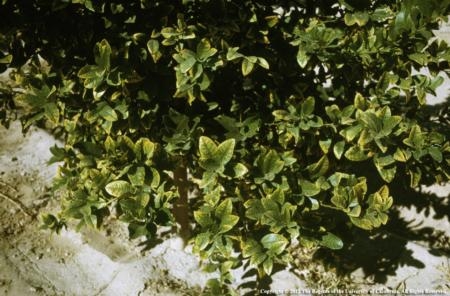
- Author: Ben Faber
No matter where they grow in California, June is a month when avocados are being watered on a regular schedule. How regular that schedule is should be carefully reviewed by the irrigator. In 1991-'92, right along the coast in a Ventura irrigation plot, we applied 32" of water, but in '92-'93 we put on only 26". Same trees, nearly the same size, but a 23% difference in applied amounts dictated by differences in water demand due to different weather. The irrigation schedule we use is driven by tensiometers and a CIMIS weather station. The station generates reference evapotranspiration values which tell us how much water to apply at an irrigation, and the tensiometers are used to verify whether the trees are doing well by the schedule. Irrigation on a fixed schedule, such as once a week for 24 hours, is going to guarantee that on average you will be either under or over irrigating at each irrigation. Using some soil-based measure, such as a soil probe or tensiometer can assure an irrigator that trees are getting the appropriate amount of water when they need it. If you haven't done so, the irrigation calculator available at the Avovcadosource.com website can be quite useful in guiding an irrigation schedule - http://www.avocadosource.com/tools/IrrigationCalculator.asp - check it out. You also need to correct for salinity accumulation.
In orchards which have not closed canopy yet, weeding is an ongoing activity. In a research plot, we are using tensiometers to monitor the effects of weeds, bare soil and chipped yard waste mulch around trees. In weedy plots soil moisture profile rapidly show 30-40 cbars of tension at 6", whereas the bare and mulched plots can go much longer before showing 40 cbars. Centibars is a measure of moisture tension, the higher the value, the drier the soil. As trees get older they make their own leaf mulch and shade which limit weed growth. There is no question that a cover crop can improve soil conditions through reduced erosion, improved water infiltration, and possible reduced disease and pest problems. These soil improvements tend to improve tree growth and orchard productivity. But, if water is the primary issue, weeds and a cover crop can add considerably to water use in an orchard, especially a young one. Weed control through the use of mulches and herbicides can effectively reduce the water requirements of trees.
June is still a good time to replant an orchard. The soils are warm enough to give the trees a good start and there is enough fine weather left for them to establish before winter comes. Late plantings (September, October) are discouraged because the root-shocked plant sits in a cold, wet soil through the winter and becomes a prime candidate for root diseases. Especially in a replant situation, it is a good idea to start them off with a fungicide with one of the phosphonate products, to give them some protection until they get established. The best time for to apply the material to do its job on older trees is when there is a good root flush of growth which occurs after the leaf flush in spring and fall.
When replanting, try as much as possible to avoid interplanting between older trees. The different water requirements of the young and old trees is such that one or both will be stressed because they need different schedules - less but more frequent for the young trees. Attempts can be made to put together a system where the older trees remain on the 10 or 15 gpm mircosprinkler and the young trees are put on a 1 gpm dripper. This still cannot be an ideal situation, since the needs for application frequency are still different between the small and big trees. The best thing to do is to clear out trees within an irrigation block and replant, or replumb a block with a new valve so that small new block can be irrigated differently from the older trees. Where clonal rootstocks fail in a root rot replant situation, it is invariably where water control is lacking or poor.
As we all know, this has been a long dry spell in the avocado growing areas along the coast. With the levels of salt in our waters, it's important to have some kind of a leaching program to ensure that salts do not accumulate in the root zone. Each winter, rain leaches the accumulated salts from the previous irrigation season and starts the orchard off to a good start. These years it hasn't happened and one of the things that can affect the trees is a stress. This is a salt stress that is most pronounced at the end of irrigation lines and where low pressure results in low output, often at the top of the hill. Any irrigation system that has poor distribution uniformity is going to have areas where less water than average is applied.
One of the responses of the trees to salt stress is to exhibit cankers in the branches. These can be silver dollar-sized cankers running in a line up the branch or as diffuse white spots in the branches. The first symptom is related to bacterial canker and the second is to black streak. These are not killer diseases, but they are reflective of the tree being under stress. As soon as the irrigation schedule is corrected, these symptoms can clear up in several months. If the schedule is not corrected the tress will begin losing leaves and sunburn can result. The symptoms of these two problems can be viewed at the UC Integrated Pest Management website - http://www.ipm.ucdavis.edu/PMG/r8100611.html and http://www.ipm.ucdavis.edu/PMG/r8100311.html.
Again these are primarily stress-related diseases and the way to correct the situation is to improve irrigation distribution uniformity and the irrigation schedule. If it goes on too long it can cause problems especially in young trees. When you boil down farming to the basics, the most important activity in the orchard is ensuring proper irrigation.
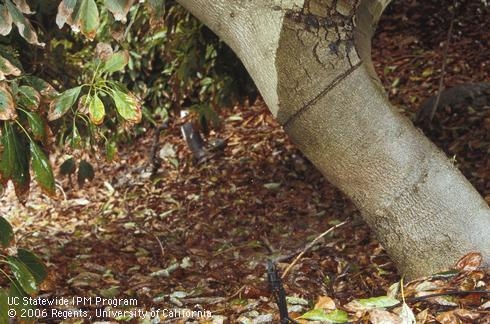
- Author: Ben Faber
Potassium deficiency in avocado and citrus leaves often looks like salt stress and more specifically sodium toxicity. Plants will often look wilted with curled leaves, yellow areas between leaf veins and dead areas along the margins of the leaves. Salt stress refers to the excessive amount of soluble salts in the root zone which induce osmotic stress (appearance of lack of water) and ion toxicity (growing problems and often symptoms) in the growing plant. Among toxic ions, sodium (Na+) has the most adverse effects on plant growth by its detrimental influence on plant metabolism in inhibiting enzyme activities. An optimal potassium (K+) : Na+ ratio is vital to activate enzymatic reactions in the cytoplasm necessary for maintenance of plant growth and yield development These enzymes control such functions as the stomata which regulate water and photosynthesis control in the plant. Although most soils have adequate amounts of K+, uptake is exacerbated under sodic or saline-sodic soil conditions as a consequence of K+-Na+ antagonism. Here K+ uptake by plants is severely affected by the presence of Na+ in the soil. Due to its similar chemical properties, Na+ competes with K+ in plant uptake It would seem a reasonable assumption therefore that an increase in the concentration of K+ in salt-affected soils may support enhanced K+ uptake. And that has been noted in many plant species including citrus and avocado.
But aside from the role of potassium in drought tolerance there are many functions of potassium in plants:
• Increases root growth and improves drought resistance
• Activates many enzyme systems
• Maintains turgor; reduces water loss and wilting
• Aids in photosynthesis and food
• Reduces respiration, preventing energy losses
• Enhances translocation of sugars and starch
• Produces grain rich in starch
• Increases protein content of plants
• Builds cellulose
• Helps retard crop diseases
In the case of avocado and citrus there is about twice the amount of potassium as nitrogen harvested in the crop, yet many growers do not consider potassium in their normal practices, much less when drought has increased salt stress on the trees. The end of August through September is when leaf analysis is best used to adjust a fertilizer program.
Sodium toxicity and Potassium deficiency in avocado




